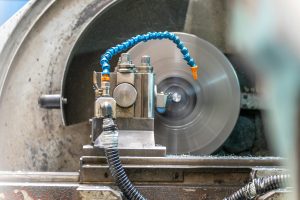The Financial Prudence of Leasing Versus Buying a New Vehicle
Buying a new vehicle is an exciting but often intimidating decision. With the average cost of a new car being over $37,000 in the United States, it’s important to carefully consider the financial implications of such a large purchase. One option that many car buyers explore is leasing a vehicle instead of buying. While both options have their pros and cons, it’s important to understand the financial prudence of leasing versus buying a new vehicle. In this article, we’ll dive into the financial aspects of both leasing and buying, so you can make an informed decision when it comes to getting behind the wheel of a new car.
The Basics of Leasing and Buying a New Vehicle
Before we explore the financial implications of leasing versus buying a new vehicle, let’s first understand the fundamental differences between the two. When you buy a car, you are purchasing the vehicle outright and are responsible for its full cost. This typically involves making a down payment and taking out a loan to cover the remaining balance, with interest. Once the loan is paid off, you own the car outright.
On the other hand, leasing involves essentially renting the vehicle for a set period of time, typically 2-3 years. During this time, you make monthly payments based on the depreciation of the car, rather than the full cost. At the end of the lease term, you have the option to return the car or purchase it for its remaining value.
The Pros and Cons of Leasing
Leasing a car has its fair share of benefits. For starters, your monthly payments are typically lower than buying because you are only paying for the cost of depreciation. If you like driving newer cars with the latest technology and features, leasing may also be more appealing, as you can upgrade to a new model after each lease term. Additionally, you don’t have to worry as much about the vehicle’s maintenance, as many leases include routine maintenance in the cost.
However, leasing also has some notable downsides. For one, you don’t own the car at the end of the lease term. This means you have nothing to show for the hundreds or even thousands of dollars you spent on monthly payments. Additionally, leasing contracts often have mileage limits which, if exceeded, can result in expensive fees. You also have less flexibility with a leased car, as you are locked into the terms of the lease until the end of the term.
The Pros and Cons of Buying
Buying a new car, though often more expensive upfront, has its own set of benefits. First and foremost, you own the car outright after paying off the loan. This means you can drive it as much as you want and make any modifications you wish. You also have complete control over selling the car whenever you choose, unlike a leased car where you have to wait until the end of the term.
However, buying a car also comes with its own pitfalls. Upfront, you’ll need to make a larger down payment, and depending on the interest rate of your loan, you may end up paying significantly more than the sticker price of the car. Additionally, as the car ages, you’ll likely face higher maintenance and repair costs, especially if you plan on keeping the car for a long time.
Comparing the Numbers: Leasing vs Buying
Now, let’s take a closer look at the financial aspects of leasing versus buying a new vehicle. For the sake of comparison, let’s say you are looking at a $30,000 car, with a lease of $300 per month for 36 months and a loan term of 60 months with a 4% interest rate.
Over the course of 36 months, you will have paid a total of $10,800 for the lease. On the other hand, if you took out a loan to buy the car, your monthly payments would be around $555, for a total of $19,800 over the course of the same 36 months. However, after the 60-month loan term, you would have paid off the car and now own it outright. Additionally, the residual value of the car after 36 months on a lease is typically around $20,000, meaning if you wanted to buy the car at the end of the lease term, you’d still have to pay an additional $20,000.
After considering these figures, it’s clear that leasing a car may initially save you some money, but in the long run, buying may be a more financially prudent decision.
Other Considerations
While the financial implications are certainly an important factor to consider when deciding whether to lease or buy a new vehicle, there are other factors to think about as well. For example, if you plan on driving the car for a long time and not upgrading to a new model every few years, buying may be a better option. On the other hand, if you want to drive a newer car with the latest features, leasing may be more suitable.
It’s also essential to consider the overall cost of ownership beyond just monthly payments. For instance, if you live in an area with high insurance rates, leasing may be more affordable as leased cars often come with comprehensive insurance. If you have a long commute or like to take road trips, consider the cost of fuel for the car you are considering. A more fuel-efficient car may be cheaper to drive in the long run, regardless of whether you lease or buy it.
The Bottom Line
In the end, there is no one-size-fits-all answer when it comes to whether leasing or buying a new vehicle is the most financially prudent choice. It ultimately depends on your specific circumstances and priorities. However, by considering the information outlined in this article, you can make an informed decision that is right for you.
Whether you ultimately decide to lease or buy, be sure to carefully weigh the financial implications, and don’t forget to factor in other considerations, such as your future plans with the car and potential mileage costs. Only then can you make a decision that gives you the best bang for your buck and ensures your financial prudence in the long run.










